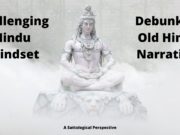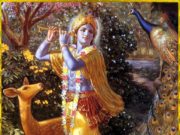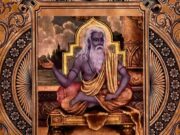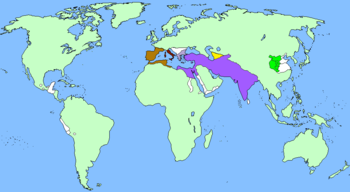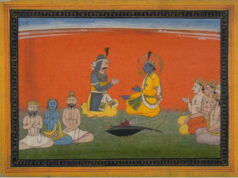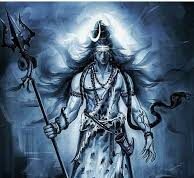Roman civilization was a polytheistic civilization wherein people were freely allowed to choose their faith based on their inclinations.
This is very similar to the Hindu civilization. The Gods and Goddesses of Greek culture heavily influenced the Roman culture. However Romans, renamed those Gods and Goddesses to suit Roman Language and culture. But basic tenets of powers and teachings of those Gods and Goddesses remained the same.
The greeks derived most of these ideas of their Gods and Goddesses from Hindu culture. Rome is named after Romelius, a perceived son of Greek God Ares. The actual history cannot be much verified just unlike the Hindu history of Greater Bharat which is confirmed through archeological and multiple written records by many scholars, visitors and foreign invaders. The versions of the history of Rome is often through paintings and sculptors commissioned by the rulers themselves. The divinity was ascribed to Romelius to impress the prevailing Greek ruling class for accepting the bonafide credentials of the founder of Rome.
According to Roman mythology, Romulus and Remus are two twin brothers, one of whom, Romulus, was the founder of the city of Rome and its first king. Commissioned Legend writers tell that Romulus and Remus were sons of the Greek god Ares, or Mars, his Latin name, and the mortal Reia Sylvia (or Rhea Silvia), daughter of Numitor, king of Alba Longa. Most of the Roman history was commissioned to be written as propaganda for their subjects.
From Chanakya Rishi’s timeline perspectives, by 324BC, Alexander’s campaign was defeated in India. After suffering a crushing defeat in India, Alexander died in Babylon from injuries suffered in India. Greek Empire continued its unrestricted power and influence only until 30 years after Alexander’s death in Babylon. After that around 20-30 years there was a period of no rule in entire, erstwhile greek territories, until Mauryans took over.
There were constant fights amongst various Greek rulers. After Greek-Mauryan alliance, with marriage of Chandra Gupta Maurya and Helena in 305 BC, the Mauryan influence over Greeks increased manifolds. Greek territories included Present day Turkey, Western Russia, Southern Europe and parts of North Eastern Africa. Greek influence carried over to Present day Italy through traders and also through Greek affiliated military alliances.
Pantheon was the original temple created by Greeks to worship their Gods in today’s Rome. The Greek influence spread across the entire Central Asian States, Turkey and the entire middle eastern region upto Turkey. Beyond that the rule was of ancient Hindu and Buddhist religion affiliated rulers. Under Chandra Gupta Maurya, Hindu rulers defeated Greeks in Turkey upto Macedonia. Western historians have purposely hidden this truth about Mauryan empire vastness. In the accounts of Mauryan empire most Greek historians such as megasthenes became part of the Mauryan empire and Greeks even in Athens began to pay taxes to Mauryan empire to maintain peace and obtain logistics help from Mauryan empire.
Romans would dare not touch Greeks because of the protection offered by Greeko-Mauryan generals. After Alexander, Mauryan Kings controlled Greek territories. After the demise of Ashoka, Mauryan Generals became weak in their Greek territories. That gave a chance to Roman Generals to began taking over Greek territories.
Roman generals first acquired historic connection with Greeks through Romelius who was said to be a son of Greek God of Mars. That historical identification with Greek history allowed Romans to be accepted by Greek held territories. The Mauryan armies which were the largest trained military power in the world during this time became weakened because of the Roman strategy of adapting to Greek influence.
The western Roman officials deliberately weakened the Greko-Mauryan alliance to gain their influence in Middle-eastern region. Greko-Mauryan influence was over the entire western Europe until 287BC because of them being the largest Military force during that time. The marriage of Chandra Gupta Maurya to the Greek princess solidified that relationship between Mauryan and Greek rulers. Eastern Greeks depended on Mauryan military strength to maintain their control of Western Greek empire.
The pyrrhic war was the first war initiated by citizens of Tarantum against Romans using elephants obtained from Mauryan empire. This war was very expensive for Pyrrhus. The mauryan influence on the European kingdoms was so strong that Western European Gauls from French Alps crossed over to Italian Alps to fight with Romans based on their Greko-Mauryan military training. Until 287 BC, the military strength of Mauryas ruled much of Europe as well as Central Asia.
Romans after establishing their divine connection to Greeks started usurping Greek theology as their own and built a parallel version of their theology by changing the names. I think this is the classical Roman history of usurping other’s cultures and ideologies and branding it as their own. Popes from Rome usurped all Roman history to claim their own version of Christian history. They put crosses on all Roman historical monuments.
The Roman Empire ruled much of Europe, North Africa and Greece by the 1st century BC. Therefore the Egyptian, Moroccan, North Saharan history is very much connected to Greco-Roman history. That explains the huge Egyptian artifacts collection shown in the Vatican museums and also other Roman museums. The Zoroastrians or Hindus ruled most of the Central Asia, Western Europe until Constantinople. After the fall of western Greko-Roman empire in 476 AD, the eastern Roman empire started controlling the west. Constantine was the first Roman emperor to convert to Christianity. There is a lot more covered in our book – Sattology (Debunking Mythology – II) available on Amazon.
Most of the history told by Western historians is a propaganda to gain self legitimacy by undermining great Indian history.
Its time for Indian Government to fund researchers such as Sattology to tell the world the correct history. Our History defines our identity and pride. India was not a subjugated country even under British and not even under Muslims. Hindus fought and continue to fight against any kind of subjugation by Muslims and Christians. The correct history of the world has to be shown and all Indian children must be taught the correct history. I hope that Indian Ministry of culture funds Sattology to excavate the Indian history to tell to the world. Indian history is Sattology, while the history imposed on India by western historians is Mythology. More later …
Timelines from Chanakya Perspective:
327 BC: Alexander’s campaign defeated in Multan and Alexander runs for his life towards west
305 BC: Chandragupta Controls most of Greek Territories


